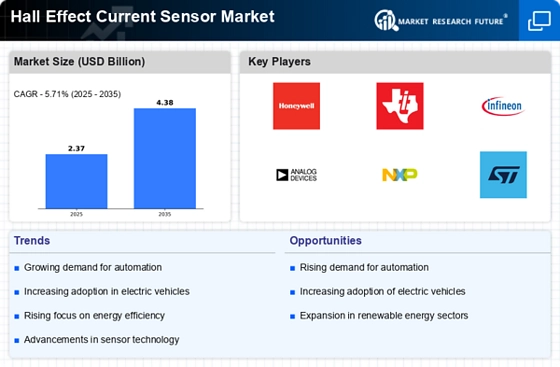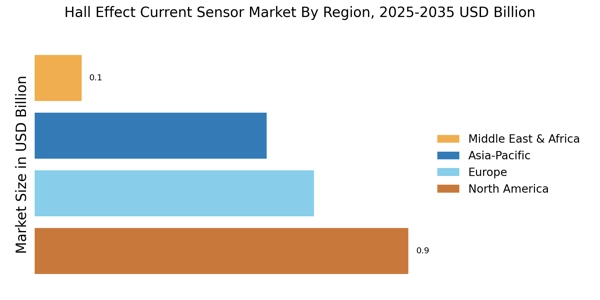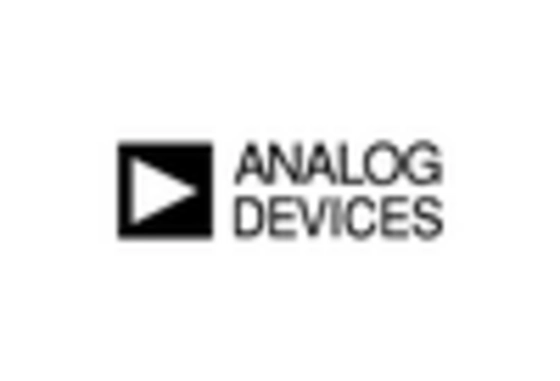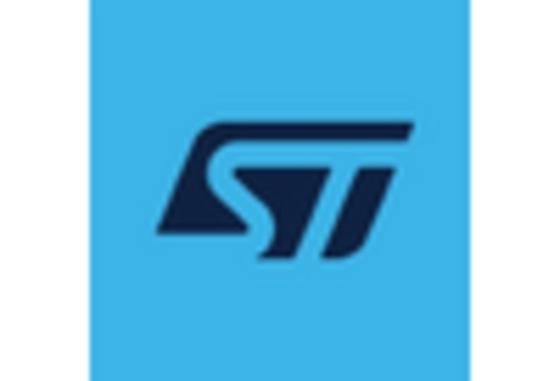Increased Focus on Energy Efficiency
The Hall Effect Current Sensor Market is benefiting from the heightened focus on energy efficiency across various sectors. Industries are increasingly adopting technologies that minimize energy consumption and optimize performance. Hall Effect current sensors are pivotal in achieving these goals, as they provide accurate current measurements that facilitate better energy management. In 2025, the energy efficiency market is projected to reach around 500 billion USD, reflecting a growing awareness of the need for sustainable practices. This trend suggests that the Hall Effect Current Sensor Market will likely see increased demand as businesses and consumers alike seek to implement energy-efficient solutions.
Technological Innovations in Sensor Design
The Hall Effect Current Sensor Market is witnessing advancements in sensor technology that enhance performance and reliability. Innovations such as miniaturization, improved sensitivity, and integration with digital interfaces are making Hall Effect sensors more appealing for various applications. These technological improvements are likely to expand the market reach of Hall Effect current sensors, making them suitable for a broader range of industries, including automotive, industrial automation, and consumer electronics. As the demand for high-performance sensors grows, the Hall Effect Current Sensor Market is expected to thrive, driven by these innovations that cater to evolving market needs.
Rising Adoption of Renewable Energy Sources
The Hall Effect Current Sensor Market is experiencing a notable surge due to the increasing adoption of renewable energy sources. As countries strive to reduce carbon emissions, the integration of solar and wind energy systems has become paramount. Hall Effect current sensors play a crucial role in monitoring and managing the flow of electricity generated from these renewable sources. In 2025, the market for renewable energy is projected to reach approximately 2 trillion USD, indicating a robust demand for efficient energy management solutions. This trend suggests that the Hall Effect Current Sensor Market will likely benefit from the growing need for precise current measurement in renewable energy applications, thereby enhancing system efficiency and reliability.
Expansion of Electric Vehicle Infrastructure
The Hall Effect Current Sensor Market is poised for growth as the electric vehicle (EV) infrastructure expands. With the increasing number of electric vehicles on the roads, there is a heightened demand for advanced monitoring systems to ensure optimal performance and safety. Hall Effect current sensors are integral in battery management systems, providing accurate current measurements that are essential for the efficient operation of EVs. The electric vehicle market is expected to witness a compound annual growth rate of over 20% in the coming years, which could significantly drive the demand for Hall Effect current sensors. This expansion indicates a promising future for the Hall Effect Current Sensor Market, as it aligns with the global shift towards sustainable transportation.
Regulatory Support for Energy Management Solutions
The Hall Effect Current Sensor Market is supported by regulatory frameworks that promote energy management solutions. Governments worldwide are implementing policies aimed at enhancing energy efficiency and reducing environmental impact. These regulations often encourage the adoption of advanced monitoring technologies, including Hall Effect current sensors, which are essential for accurate energy management. As regulatory bodies continue to emphasize sustainability, the demand for Hall Effect current sensors is likely to increase. This supportive environment indicates a favorable outlook for the Hall Effect Current Sensor Market, as it aligns with global efforts to achieve energy conservation and sustainability goals.

















Leave a Comment